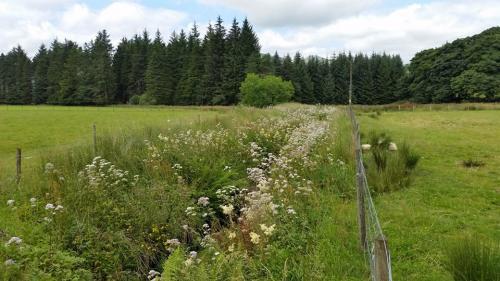There is still a lot of water to flow under the bridge before the scale and shape of future public funding to farmers and other land managers becomes clearer. But with Brexit rapidly approaching – and with each new model of theoretical scenarios suggesting that major changes to current support levels are inevitable – then one major topic of debate revolves around the suggestion that future support for land management will primarily be targeted at the provision of public goods. And although this argument is primarily being made in England at the moment, it is not one we can ignore in Scotland for the reasons set out below.
Why such a focus on public goods?
It is clear that our rich and diverse environment is not only important for our own leisure and recreation but is also increasingly recognised as making an essential contribution to society’s health and well-being. As a nation we also trade on the high quality of Scotland’s environment in order to attract tourists and sell products from our farming, forestry and fishing industries.
So maintaining, and where necessary improving, the health of our environment is therefore of fundamental importance to achieving a healthy and sustainable Scotland. But while much of our environment is of relatively good quality, there are still a number of environmental challenges to be addressed.
Ongoing climate change is having an increasingly adverse economic impact on all levels of society, as evidenced by regular floods in our towns and villages and storm damage to our farmland and forests. Improving water quality, managing flood risk, protecting our soils and reversing biodiversity declines are other key areas where improvements are required.
For all these challenges wider society is looking for changes in land and water management to help deliver the improvements. And of course, we cannot divorce what happens in the water environment from what happens on land. Both are inextricably linked.
So what type of public goods can farmers across Scotland help provide?
On our upland farms there is plenty of scope to restore degraded peatlands in the hills and establish more woodland at lower levels.
Healthy peatlands lock up carbon while absorbing and storing more. They can also act as giant sponges, holding back water during periods of high rainfall. Restoring degraded peatlands by re-vegetating bare areas and blocking ditches to re-wet the peat also stops the processes causing greenhouse gas emissions like carbon dioxide and methane.
Peatland restoration alleviates flooding by slowing down water flowing off the hill and improves water quality by reducing the amount of sediment. Once peatlands start to function properly again there are also major nature conservation benefits for the wide range of plants and wildlife relying on them.
Establishing more woodland on the lower parts of our upland farms would make more shelter available to livestock exposed to increasing extreme weather events. But it would also provide more wildlife habitats and, if trees are planted in the right places, also help reduce downstream flooding by holding back the water from saturated moorlands.
The challenge on our lowland farms is to maintain profitable food production while increasing the diversity of habitats like woodlands, unmanaged field margins, wetlands and wooded riversides. These would benefit farmland biodiversity and help capture nutrients and soil escaping from fields into watercourses.
Combining some of these elements with recreating meanders on rivers, establishing field storage ponds to retain flood water, and managing those fields to reduce soil and water run-off would also provide ways of mitigating flood events by slowing the flow of water through the lowlands.
Why the need to change the way land managers are supported?
It is important to remember that most – if not all - of the questions being asked about how best to use public funding to obtain public goods have been around for a long time. What Brexit has done is to bring those questions more to the forefront of a much greater number of people’s minds.
In particular, it is now being recognised that any public funding that goes to land managers in the future is going to have to be argued for - and justified - against other calls on public funding such as health and education. In order to make such arguments it will be important that the public goods being delivered can be assessed in a cost-effective and transparent way.
A two-day conference being held in Edinburgh at the end of November (Rewarding the delivery of public goods: how to achieve this in practice?) will help inform and shape the debate about how best to reward farmers, foresters and other land managers for delivering public goods from their land management practices.
In particular it will provide a forum to help develop thinking of practical implementation on the ground and what that means for policy development. Further information on the conference is available at: https://www.sruc.ac.uk/info/120470/land_use_conference
Head of SRUC’s Hill & Mountain Research Centre
McCracken, D. 2018. How might our farmers adapt to a public money for public goods regime? The Courier and Press & Journal Farm Focus Supplement, 12th November 2018 https://www.pressreader.com/similar/283364768082203
